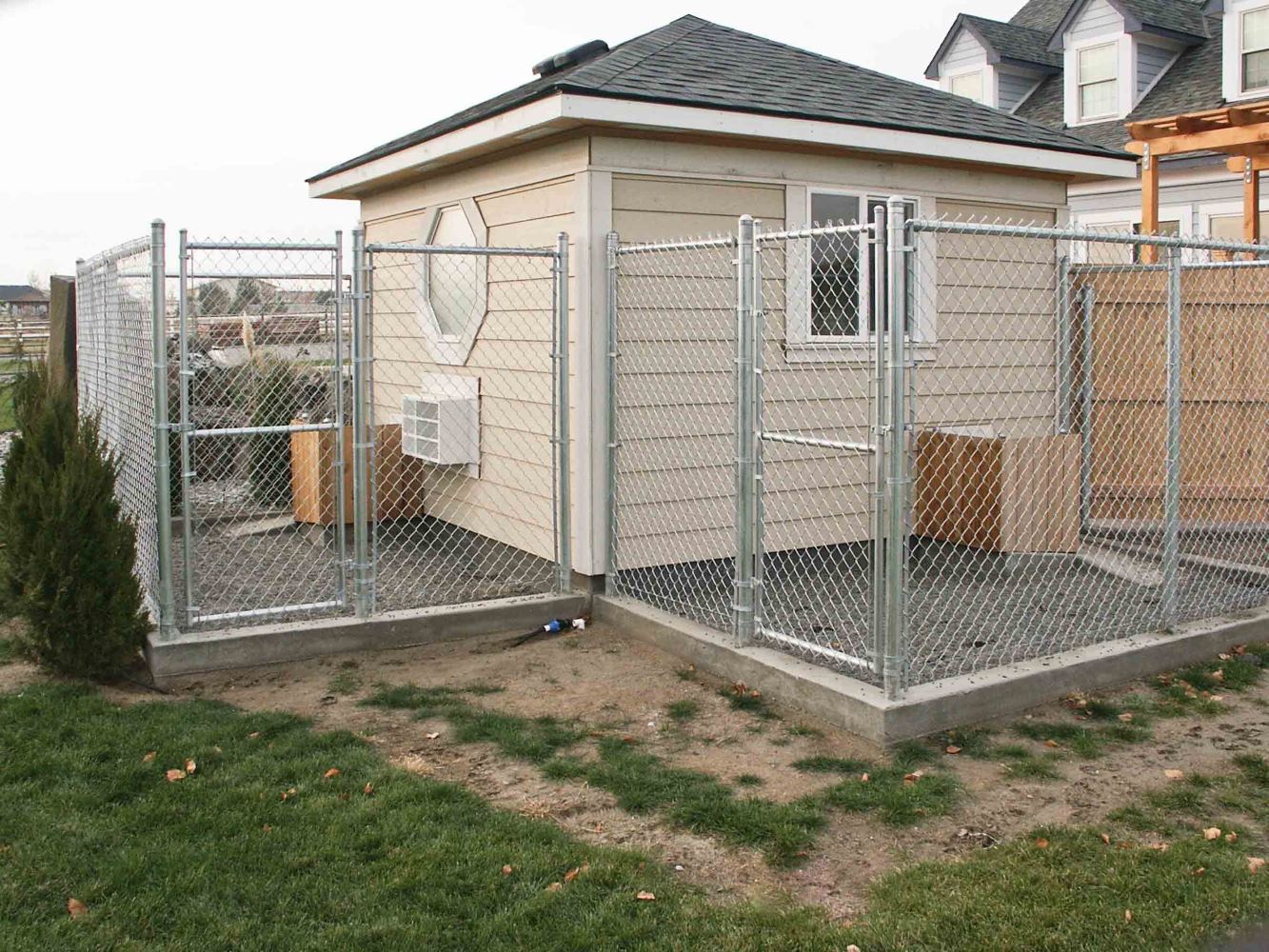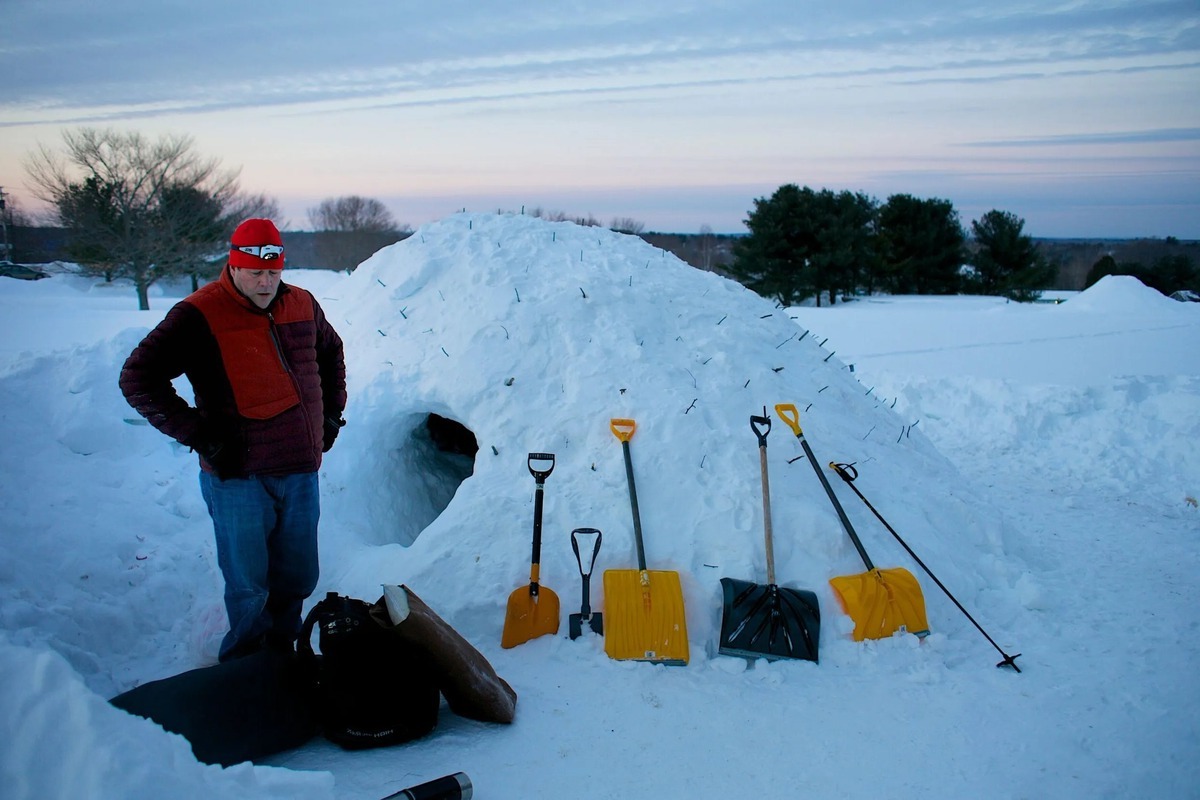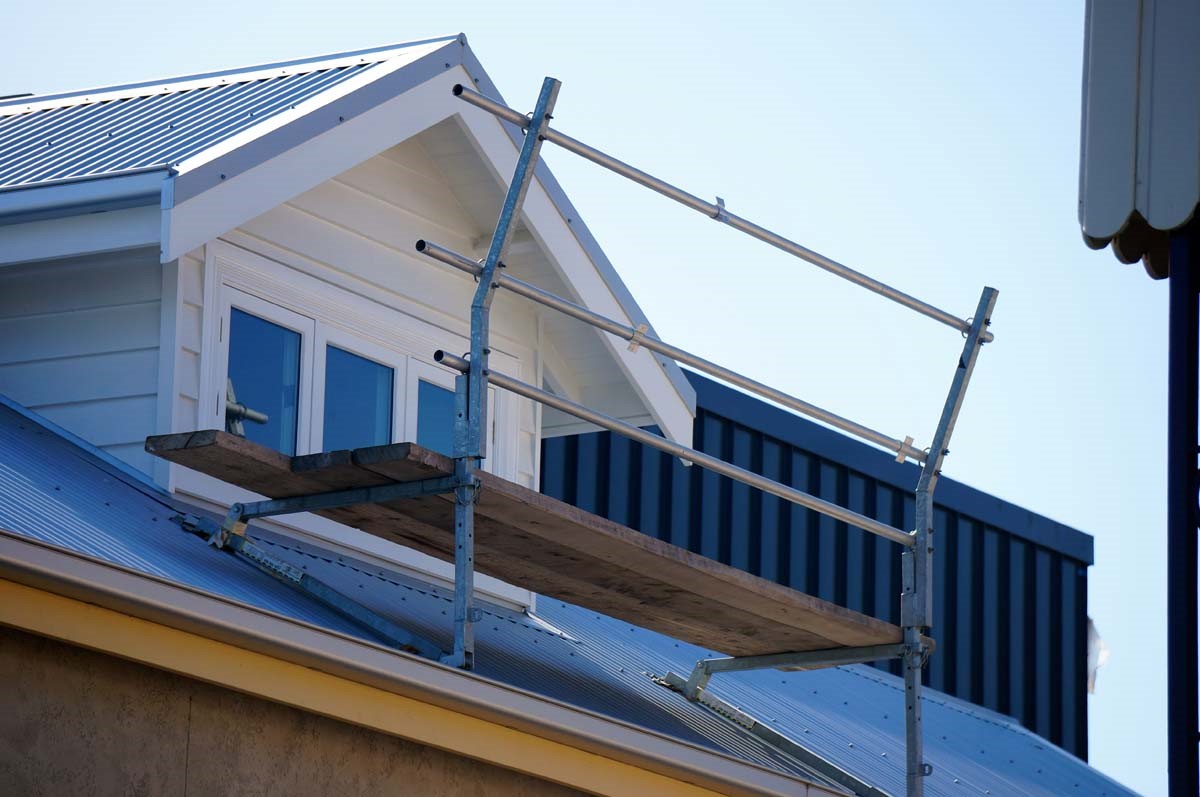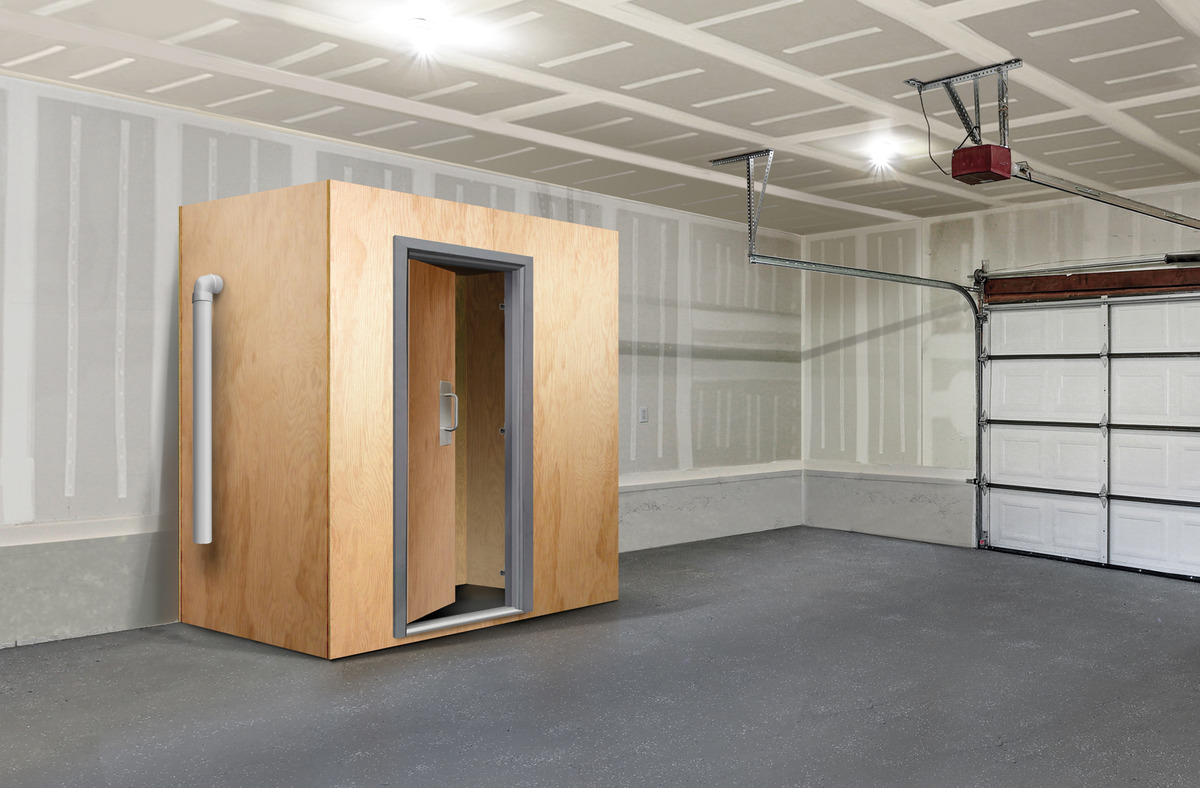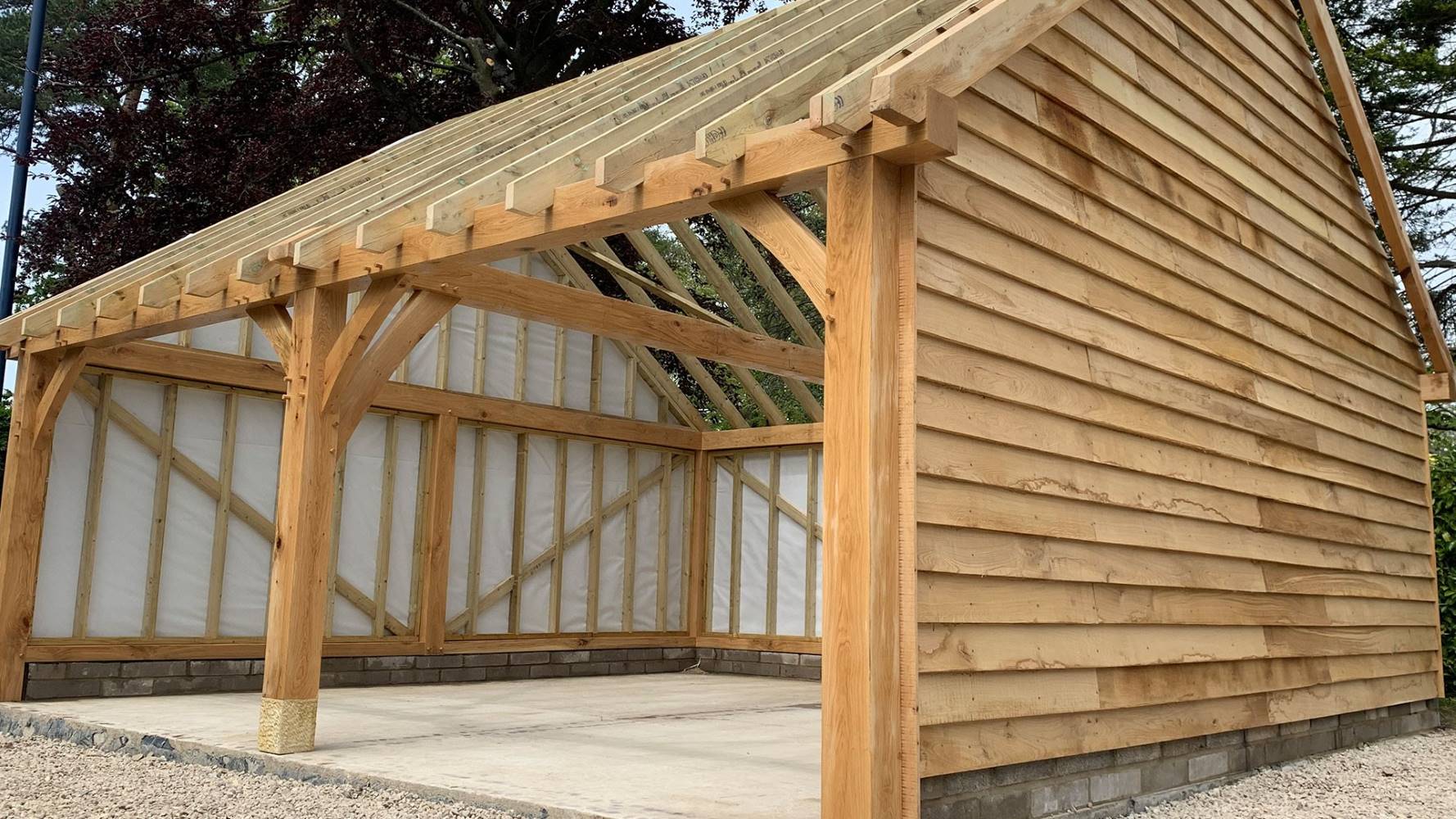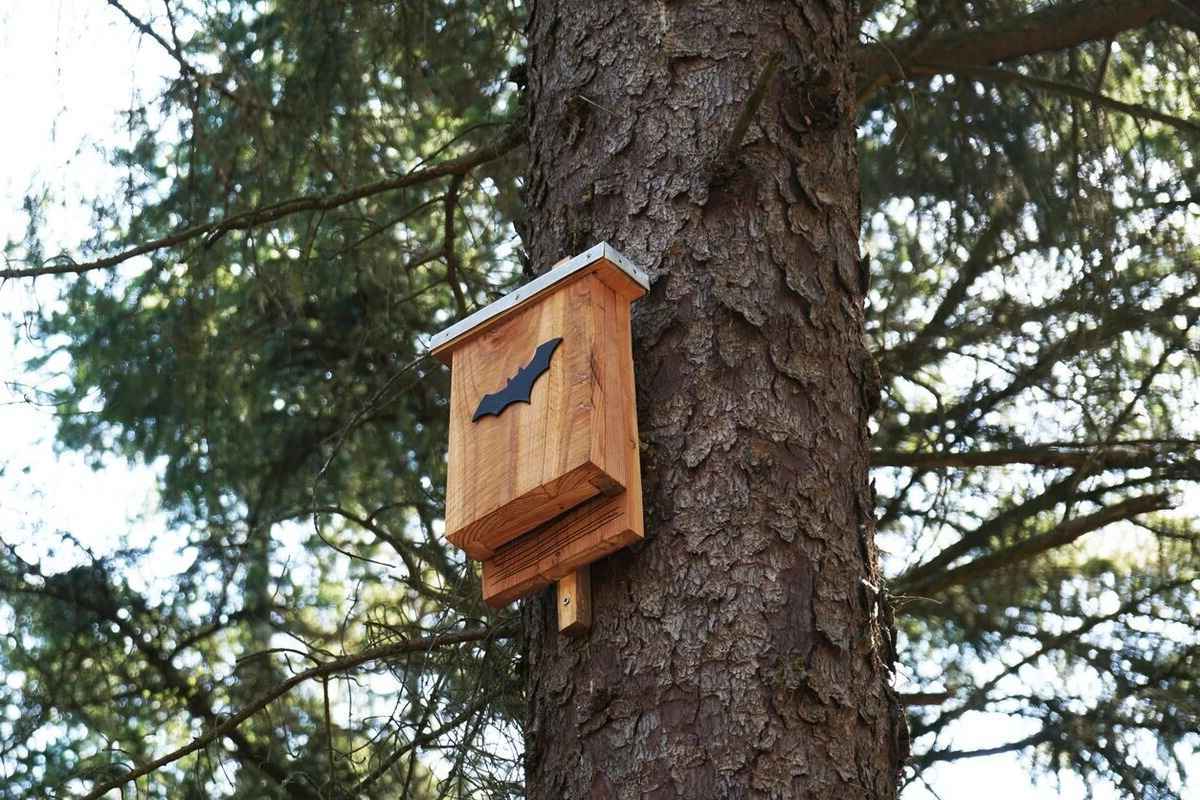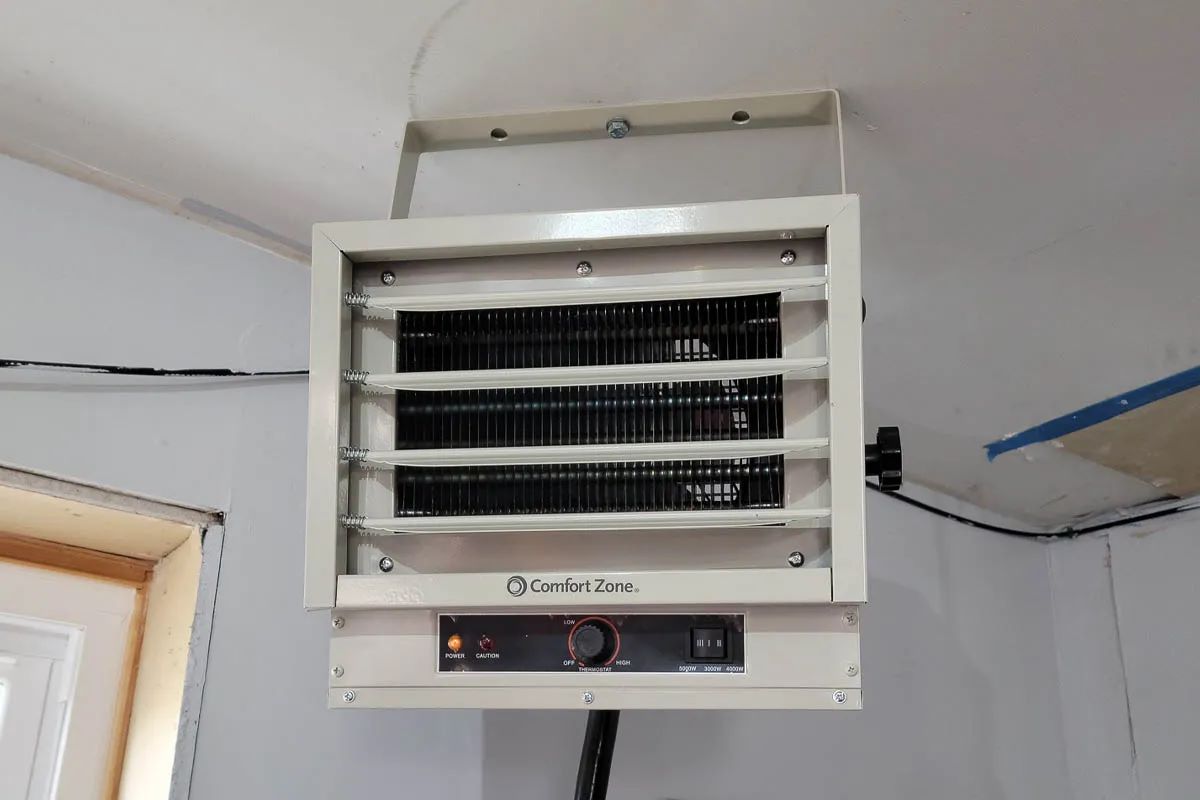Home>Home & Furniture>Garage & Basement>DIY Tornado Shelter: Building A Safe Haven
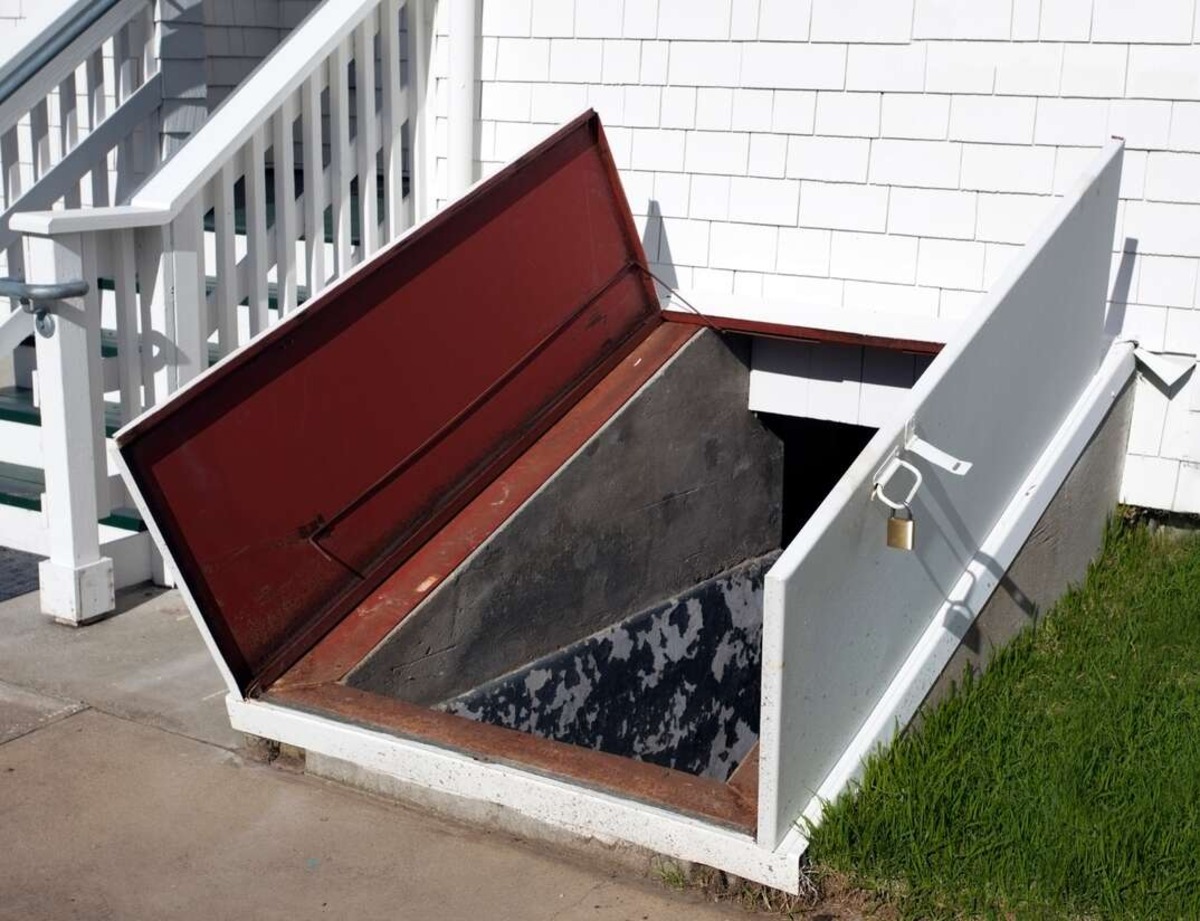

Garage & Basement
DIY Tornado Shelter: Building A Safe Haven
Published: February 21, 2024
Editor-in-Chief with a decade in home renovation and a passion for vintage furniture. Diane is known for her weekend treasure hunts at flea markets, enriching our content with unique style insights.
Learn how to build a secure tornado shelter in your garage or basement with our step-by-step DIY guide. Protect your family from severe weather.
(Many of the links in this article redirect to a specific reviewed product. Your purchase of these products through affiliate links helps to generate commission for Twigandthistle.com, at no extra cost. Learn more)
Introduction
When the sky darkens and the wind begins to howl, the threat of a tornado can strike fear into the hearts of many. The destructive power of these natural disasters is undeniable, and the need for a safe haven becomes paramount. In the face of such a formidable force of nature, having a designated tornado shelter can provide a sense of security and peace of mind for you and your loved ones.
In this comprehensive guide, we will delve into the essential steps and considerations for building your very own DIY tornado shelter. Whether you reside in a tornado-prone region or simply wish to be prepared for unforeseen emergencies, constructing a tornado shelter can be a life-saving endeavor.
Throughout this article, we will explore the importance of having a tornado shelter, the optimal location for its placement, the necessary materials and tools, and a detailed, step-by-step guide to aid you in the construction process. Additionally, we will address crucial safety precautions and considerations to ensure that your shelter is not only effective but also secure.
By the end of this guide, you will be equipped with the knowledge and confidence to embark on this crucial project. Building a tornado shelter is not only a practical endeavor but also a testament to your commitment to safeguarding the well-being of your family and community.
So, let's roll up our sleeves and embark on this empowering journey to create a safe haven amidst the storm.
Read more: How To Build A Dugout Shelter
Understanding the Importance of a Tornado Shelter
In the face of a tornado, having a designated shelter can mean the difference between life and death. Tornadoes are known for their destructive power, capable of causing widespread devastation within a matter of minutes. These violent storms can unleash ferocious winds, hurl debris at incredible speeds, and leave a trail of destruction in their wake. In such harrowing circumstances, a well-constructed tornado shelter serves as a crucial refuge, offering protection from the deadly forces of nature.
The significance of a tornado shelter becomes even more pronounced in regions prone to tornado activity. By having a shelter in place, individuals and families can mitigate the inherent risks associated with these natural disasters. The shelter provides a secure space where occupants can seek refuge, minimizing the likelihood of injury or worse during a tornado.
Moreover, the presence of a tornado shelter instills a sense of preparedness and resilience within a community. It serves as a tangible symbol of proactive measures taken to safeguard lives and property in the event of a tornado. By prioritizing the construction of a tornado shelter, individuals and communities demonstrate a commitment to safety and disaster readiness, fostering a collective sense of security and well-being.
Beyond the immediate protection it offers during a tornado, a well-designed shelter can also serve as a multi-purpose safe haven during other emergencies. Whether it's a severe thunderstorm, hurricane, or any situation requiring temporary refuge, a tornado shelter can fulfill a vital role in ensuring the safety and security of its occupants.
In essence, the importance of a tornado shelter cannot be overstated. It stands as a testament to proactive disaster preparedness, providing a tangible means of protection and peace of mind in the face of nature's fury. As we delve deeper into the process of constructing a DIY tornado shelter, it is essential to recognize the profound significance of this endeavor and the potential impact it can have on the safety and well-being of individuals and communities.
Choosing the Right Location for Your DIY Tornado Shelter
Selecting the optimal location for your DIY tornado shelter is a critical decision that significantly influences its effectiveness and safety. The right location can maximize protection and accessibility during a tornado, ensuring that the shelter serves its intended purpose. Here are essential factors to consider when choosing the location for your tornado shelter:
Accessibility and Proximity
The first consideration when determining the location of your tornado shelter is accessibility. It should be conveniently located, allowing quick and easy access for all occupants, especially during the chaotic onset of a tornado. Placing the shelter in close proximity to your home, such as in the backyard or near the house, can minimize the time needed to reach safety, enhancing the shelter's overall effectiveness.
Structural Integrity of the Ground
The ground where the shelter will be installed must possess the necessary structural integrity to support the shelter and withstand the forces exerted during a tornado. Opt for a location with stable, well-compacted soil that can provide a solid foundation for the shelter. Avoid areas prone to flooding or erosion, as these can compromise the stability of the shelter over time.
Read more: How To Build A Shelter
Avoiding Potential Hazards
When selecting a location, it is crucial to steer clear of potential hazards that could pose a threat to the shelter and its occupants. Avoid areas near large trees, power lines, or structures that could collapse during a tornado. Additionally, ensure that the chosen location does not obstruct emergency access for first responders in the aftermath of a tornado.
Consideration of Drainage
Proper drainage is essential to prevent water accumulation around the shelter, which could compromise its integrity and safety. Choose a location that facilitates natural drainage and consider implementing additional measures, such as grading the surrounding area, to prevent water from pooling around the shelter.
Integration with Home Layout
Integrating the tornado shelter with the layout of your home can enhance its accessibility and seamless incorporation into your property. Consider locations that allow for convenient access from the house, such as through a reinforced interior room or a dedicated entrance that aligns with your family's emergency evacuation plan.
By carefully considering these factors and conducting a thorough assessment of your property, you can identify the ideal location for your DIY tornado shelter. Remember that the chosen location should prioritize safety, accessibility, and structural integrity, ultimately ensuring that your shelter stands ready to provide reliable protection when the next tornado strikes.
Materials and Tools Needed for Building a Tornado Shelter
Building a tornado shelter requires careful planning and the use of appropriate materials and tools to ensure its structural integrity and effectiveness. Here's a comprehensive list of the essential materials and tools needed for constructing a sturdy and reliable tornado shelter:
Read more: How to Build a Window Catio Step-by-step
Materials:
-
Concrete: Considered the primary material for constructing tornado shelters, high-strength concrete provides the necessary durability and resistance to withstand the forces exerted during a tornado. It forms the walls, floor, and ceiling of the shelter, creating a protective enclosure for occupants.
-
Rebar (Reinforcing Bar): Reinforcing the concrete with steel rebar enhances the structural strength of the shelter, effectively reinforcing the walls and ensuring resilience against extreme wind loads and debris impact.
-
Anchoring Hardware: Utilize anchor bolts and other appropriate hardware to securely fasten the shelter to the foundation, preventing displacement during high winds and ensuring stability.
-
Ventilation Pipes: Proper ventilation is crucial for a tornado shelter to maintain air quality and prevent suffocation. Ventilation pipes facilitate air circulation while safeguarding occupants from airborne debris.
-
Waterproofing Materials: Applying waterproofing coatings and sealants to the exterior surfaces of the shelter helps prevent water infiltration, ensuring a dry and secure interior during and after a tornado.
-
Access Door: Install a heavy-duty access door designed to withstand high winds and debris impact. The door should provide a tight seal to prevent air and water infiltration.
-
Emergency Supplies: Stock the shelter with essential emergency supplies, including first aid kits, non-perishable food, water, flashlights, and a battery-powered radio, to sustain occupants during and after a tornado.
Tools:
-
Concrete Mixer: A concrete mixer facilitates the efficient mixing and pouring of concrete, ensuring uniform consistency and quality for the shelter's walls, floor, and ceiling.
-
Rebar Cutter and Bender: These tools are essential for cutting and bending reinforcing bars to the required dimensions, enabling precise reinforcement placement within the concrete structure.
-
Drill and Anchoring Tools: Utilize a heavy-duty drill and appropriate anchoring tools to install anchor bolts and secure the shelter to the foundation with precision and reliability.
-
Ventilation Installation Tools: Tools such as hole saws, ductwork cutters, and sealants are necessary for the proper installation of ventilation pipes, ensuring effective air circulation within the shelter.
-
Waterproofing Application Tools: Brushes, rollers, and sprayers are essential for applying waterproofing coatings and sealants to the shelter's exterior surfaces, safeguarding it against water intrusion.
-
Construction and Assembly Tools: Standard construction tools, including shovels, trowels, levels, and wrenches, are indispensable for the assembly and construction of the tornado shelter, ensuring accuracy and structural integrity throughout the process.
By acquiring the requisite materials and tools and adhering to best practices in construction, you can embark on the journey of building a robust and secure tornado shelter. This investment in preparedness and safety will yield invaluable peace of mind and protection for you and your loved ones in the face of nature's most formidable storms.
Step-by-Step Guide to Building Your DIY Tornado Shelter
-
Site Preparation: Begin by selecting the designated location for your tornado shelter and excavating the area to the required depth and dimensions. Ensure that the excavation is carried out in accordance with local building codes and safety regulations. The site should be meticulously prepared to provide a stable foundation for the shelter.
-
Formwork Construction: Construct the formwork that will define the shape and structure of the shelter. The formwork serves as a mold for the concrete, allowing for the precise casting of the shelter's walls, floor, and ceiling. Pay careful attention to the accuracy and alignment of the formwork to ensure the integrity of the shelter's dimensions.
-
Reinforcement Placement: Install the steel rebar within the formwork to reinforce the concrete structure. The rebar should be strategically positioned to provide optimal strength and resilience, effectively fortifying the shelter against the forces of a tornado. Ensure that the rebar is securely fastened and properly spaced to achieve the desired structural reinforcement.
-
Concrete Pouring: With the formwork and reinforcement in place, proceed to pour high-strength concrete into the mold, filling the designated space for the shelter. Employ proper techniques to ensure uniform distribution and consolidation of the concrete, minimizing the presence of air pockets and achieving a robust, durable structure.
-
Anchoring and Securing: Once the concrete has been poured and allowed to set to the appropriate strength, anchor the shelter to the foundation using reliable anchoring hardware. This step is crucial for securing the shelter in place and preventing displacement during high winds. Verify the integrity of the anchoring system to guarantee the shelter's stability.
-
Ventilation and Access Installation: Install ventilation pipes to facilitate air circulation within the shelter, ensuring a constant supply of fresh air. Simultaneously, mount the access door, ensuring a tight seal and robust construction to withstand the impact of debris and high winds. These elements are essential for maintaining a safe and habitable environment within the shelter.
-
Waterproofing and Finishing: Apply waterproofing materials to the exterior surfaces of the shelter, safeguarding it against water infiltration and ensuring a dry interior. Implement proper drainage measures to prevent water accumulation around the shelter. Additionally, consider integrating emergency supplies and essential amenities to enhance the shelter's functionality and readiness for emergencies.
By diligently following these step-by-step guidelines, you can embark on the construction of your DIY tornado shelter with confidence and precision. This proactive endeavor not only reinforces your preparedness for tornadoes but also underscores your commitment to safeguarding the well-being of your family and community.
Safety Precautions and Considerations
Ensuring the safety and structural integrity of your DIY tornado shelter is paramount to its effectiveness as a protective refuge during a tornado. Implementing thorough safety precautions and considerations throughout the planning and construction process is essential to create a shelter that can withstand the formidable forces of nature. Here are crucial safety measures and considerations to prioritize:
Read more: How To Build A Shelter In The Woods
Professional Consultation and Compliance
Before commencing the construction of a tornado shelter, it is advisable to seek professional consultation from structural engineers or certified shelter designers. Their expertise can provide invaluable insights into the design, construction, and reinforcement requirements specific to tornado shelters. Additionally, adhere to local building codes, regulations, and permit requirements to ensure compliance with safety standards and structural integrity.
Quality Assurance and Testing
Utilize high-quality materials and ensure that all components, including concrete, rebar, anchoring hardware, and ventilation systems, meet industry standards for strength and durability. Conduct thorough quality assurance checks throughout the construction process to verify the integrity of the shelter's components. Consider performing load tests and structural assessments to validate the shelter's resilience against extreme wind loads and debris impact.
Adequate Ventilation and Emergency Preparedness
Proper ventilation is essential to maintain air quality within the shelter and prevent the buildup of harmful gases. Install ventilation systems with protective measures to prevent debris intrusion and ensure continuous airflow during a tornado. Additionally, equip the shelter with essential emergency supplies, including first aid kits, non-perishable food, water, flashlights, and a battery-powered radio, to sustain occupants during and after a tornado.
Accessibility and Evacuation Planning
Ensure that the tornado shelter is easily accessible to all occupants, including individuals with mobility challenges. Implement clear evacuation plans and designate a primary and secondary route to the shelter from various locations within your property. Conduct regular drills and familiarize all occupants with the shelter's location and emergency procedures to facilitate swift and organized evacuation during a tornado warning.
Read more: How to Build a DIY Storm Shelter Door
Regular Maintenance and Inspection
After the construction of the tornado shelter, establish a routine maintenance schedule to inspect and maintain its structural integrity, ventilation systems, and emergency supplies. Regularly check for signs of wear, corrosion, or damage to the shelter's components and promptly address any issues to uphold its readiness for emergencies.
By prioritizing these safety precautions and considerations, you can fortify the reliability and effectiveness of your DIY tornado shelter, ensuring that it stands as a resilient and secure refuge amidst the fury of a tornado. This proactive approach to safety underscores your commitment to safeguarding lives and underscores the importance of disaster preparedness within your community.
Conclusion
In the face of nature's most formidable storms, the construction of a DIY tornado shelter stands as a testament to proactive preparedness and a commitment to safeguarding lives. Throughout this comprehensive guide, we have delved into the essential considerations and steps involved in building a sturdy and reliable tornado shelter. From understanding the profound importance of having a designated shelter to selecting the optimal location, acquiring the necessary materials and tools, and meticulously constructing the shelter, each aspect contributes to the overarching goal of enhancing safety and resilience in the face of tornadoes.
The significance of a tornado shelter extends far beyond its physical structure. It embodies a proactive stance against the unpredictable forces of nature, instilling a sense of security and preparedness within individuals and communities. By prioritizing the construction of a tornado shelter, individuals not only fortify their own safety but also contribute to the collective resilience of their community, fostering a culture of disaster preparedness and mutual support.
As we conclude this guide, it is essential to emphasize the transformative impact of building a tornado shelter. Beyond the tangible protection it offers during tornadoes, the shelter serves as a symbol of empowerment, embodying the proactive measures taken to safeguard lives and property. It represents a beacon of resilience, standing ready to provide refuge and security amidst the chaos of a tornado.
The journey of constructing a DIY tornado shelter is not merely a construction project; it is a testament to the unwavering commitment to protect loved ones and ensure their safety in the face of adversity. It is a tangible expression of care and responsibility, reflecting the dedication to fortify the foundations of safety and security within our homes and communities.
As you embark on the endeavor of building a tornado shelter, remember that the impact of your actions extends far beyond the physical structure. You are contributing to a culture of preparedness, resilience, and safety, setting an example for others and fostering a sense of unity and support within your community.
In the end, the construction of a tornado shelter is a powerful declaration of resilience, a testament to the unwavering spirit that rises to meet the challenges posed by nature's fury. It is a beacon of hope and a tangible embodiment of the unwavering commitment to protect and preserve life, standing as a testament to the strength and unity of the human spirit in the face of adversity.

